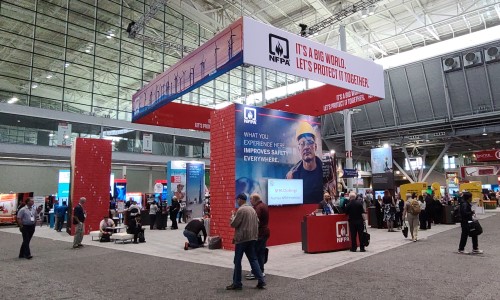The Price of Proper Safety: Paying NFPA and UL Standards Their Dues
Though some argue they should be free, the NFPA or ICC could not survive and be able to continue their missions if the codes and standards they publish were available in public domain.

In my last column I stated that this month would focus on bi-directional antenna (BDA) systems. That column is coming, but not this month. In June, I attended the first live annual meeting of the National Fire Protection Association (NFPA) after a two-year virtual gap due to COVID-19.
It was good to finally see individuals who I have not seen live for over two years. It was also great to finally see products after a two-year gap in time.
While there was a number of new products being shown, that will not be the topic of this column. The topic is the availability of codes and standards and the costs associated with that availability.
During the general session of the meeting, Jim Pauley, president of CEO of the NFPA, spent a couple of minutes in his remarks on these subjects.
In past columns, I have detailed how codes and standards are developed. There are two leading organizations within the U.S. that promulgate the majority of building and fire codes, the NFPA and the International Code Council. (ICC).
Once a code or standard has been released for publication by either of these organizations, they are adopted by a state of local jurisdiction to be used by them as their building and/or fire code. The jurisdiction then may make local amendments to the base document for use within their jurisdiction.
Both of these organizations, while funded in part by membership dues, receive their primary funding through the publication of these completed documents. Through each cycle of a particular code or standard, refinements and changes are made.
There is a segment of the users of the published codes and standards that have adopted a theory that once a state of jurisdiction has adopted a particular code and/or standard, that the document becomes part of the public domain and should be available to all at no cost. To be clear, I am not a lawyer, so I am not going to discuss any case law within this short article.
The NFPA or ICC could not survive and be able to continue their missions if the codes and standards that they publish would be free and within the public domain for distribution.
While the codes and standards are developed by countless volunteers, such as myself, it still takes a staff and organization to put it all together and publish the final works, and then to do it time after time.
There is also the mission of both the NFPA and ICC that could not be executed if they both did not exist, and the codes and standards that are published by both would no longer be published.
The I-Codes through the ICC are available in a digital format at a very reasonable cost. The NFPA code and standards are available for review at no cost though the NFPA web portal. State amendments can be obtained in most cases through the adopting agency and local changes by a jurisdiction can be obtained typically through the city clerk’s web portal.
There remain those that feel for one reason or another that if a code or standard are adopted, that the entire document should be released at no cost. The same is true if a code should have a reference to a particular standard, that those standards should be part of the public record, say, NFPA 72, National Fire Alarm & Signaling Code.
This simply cannot be. As tempting as it might be to find and download a pirated copy, it in the end is the same as making a copy of a software product. The firms that produce the software cannot exist if their products are copied and distributed at no cost. The same issue occurred several years ago with streaming music and videos.
At the end of the day, purchase your copies of the NFPA and ICC codes and standards that you use in your daily work. By doing so you are supporting the important work that both the ICC and NFPA perform to improve building and fire-safety within the U.S., as well as throughout the world.
If you enjoyed this article and want to receive more valuable industry content like this, click here to sign up for our FREE digital newsletters!

Security Is Our Business, Too
For professionals who recommend, buy and install all types of electronic security equipment, a free subscription to Commercial Integrator + Security Sales & Integration is like having a consultant on call. You’ll find an ideal balance of technology and business coverage, with installation tips and techniques for products and updates on how to add to your bottom line.
A FREE subscription to the top resource for security and integration industry will prove to be invaluable.








